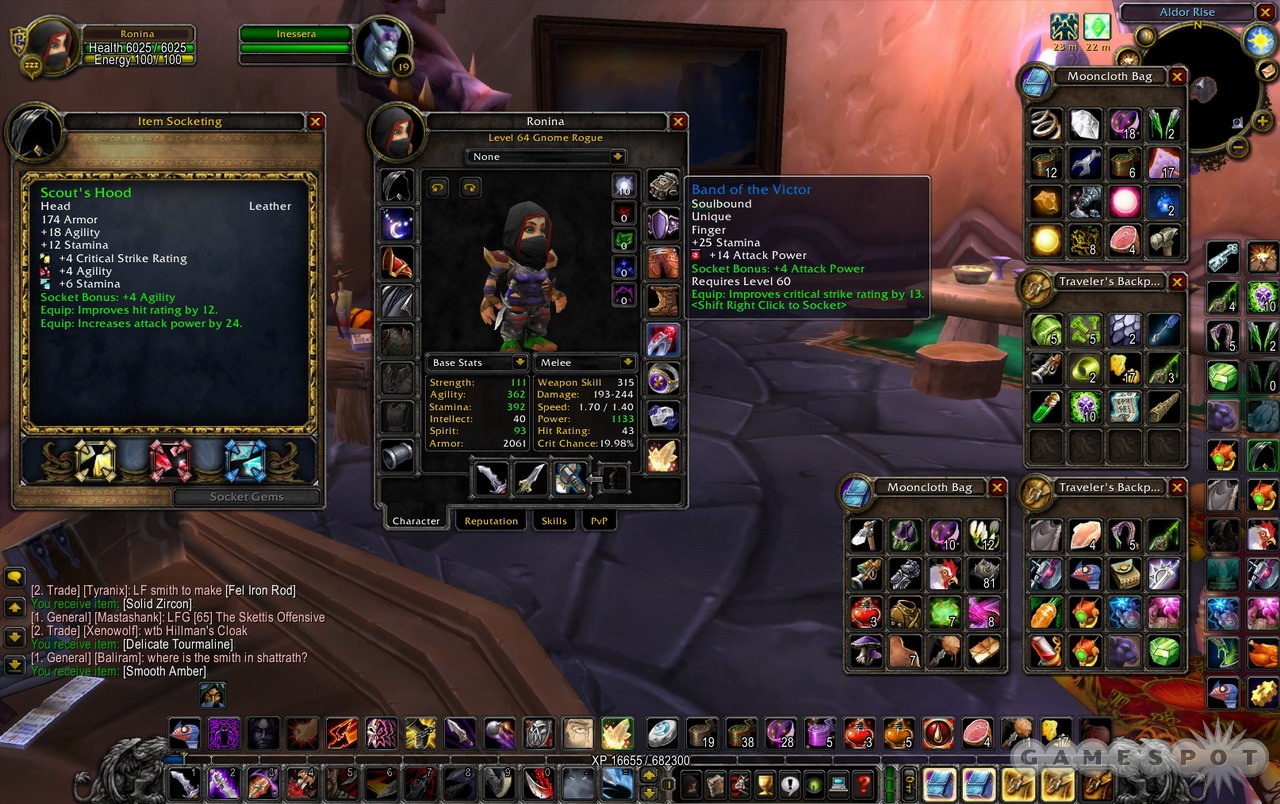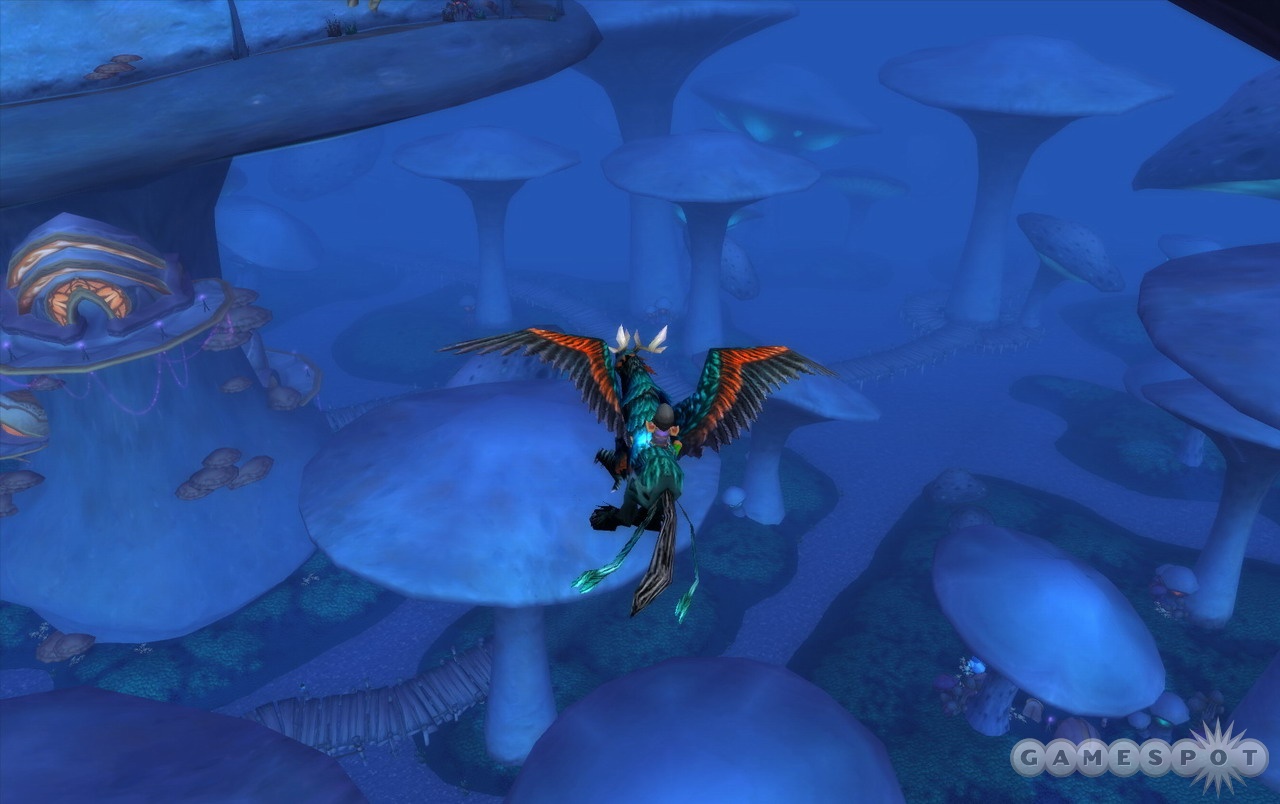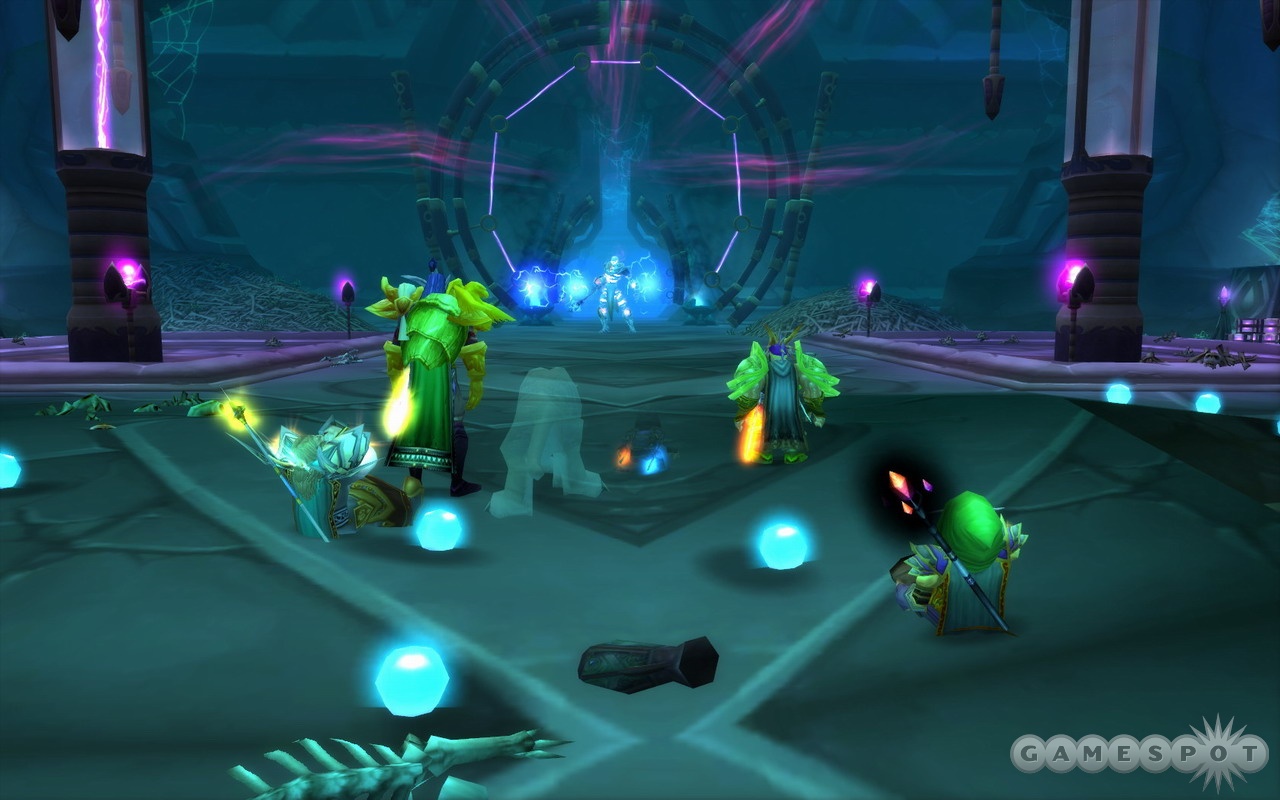When it was released in November 2004, World of Warcraft raised the bar for the massively multiplayer genre, and more than two years later, none of its would-be competitors have even come close to matching it. Even at launch there was very little to find fault with in Blizzard's first MMOG offering, and thanks to regular free updates and no shortage of feedback from a community that now numbers more than 8 million players, it has continued to grow and evolve into an even bigger and better game. With the recent release of The Burning Crusade, World of Warcraft has never been better, and while you don't need the expansion pack to continue playing, it's hard not to feel like you're missing out in Azeroth without it.

Like any great expansion pack, The Burning Crusade doesn't just offer more of the same, and it doesn't cater exclusively to experienced players. It offers a lot more of the same, and it also adds a number of new features that can be enjoyed by newcomers and level 60 veterans alike. Perhaps the most significant additions introduced in The Burning Crusade are the blood elves and the draenei--two new playable races that have made the paladin class available to the Horde faction and the shaman class available to the Alliance faction for the first time. Both of these races have quite fascinating backstories that are revealed both through their respective intro movies and via in-game quests and conversations with non-player characters. Like the eight previously existing playable races in Azeroth, the blood elves and the draenei begin their adventures in specially designed starter areas where you can play without having to worry about bothersome high-level opposing players for the first 15 to 20 levels of your character's existence. Thereafter, the new races join the rest on one of Azeroth's two continents, where there are more than enough quest-filled environments and dungeons to keep you busy to level 60 and beyond.
It's only possible to advance beyond the original game's level 60 cap if you own The Burning Crusade, which unlocks new player skills and talents for characters through to level 70. It's conceivable that you could advance through many of the levels post-60 without ever visiting the new Outland realm, but it'd be a far more time-consuming and less profitable process because quests in Outland offer significantly more experience points and gold. Furthermore, Outland is the only place where you can advance your chosen professions beyond the previous skill cap of 300 to gather all-new resources and craft powerful new items. All of the existing professions such as leatherworking, alchemy, cooking, and enchanting can now be pursued to a maximum skill level of 375, which is also true of the new jewelcrafting profession.
Along with engineering, jewelcrafting is undoubtedly one of the most interesting and useful professions to pursue in World of Warcraft right now. Every profession in the game serves a purpose, but many of the items that can be made by weaponsmiths and tailors, for example, are no better than those that regularly drop from enemies and subsequently appear in major cities' auction houses. As a jewelcrafter, you'll initially spend your time and resources making simple rings and necklaces that afford their wearers small attribute bonuses. As your skills improve (and the materials you need become less common and more expensive), you'll learn to make powerful trinkets, rings and necklaces that can be used to buff the attributes of other party members as well as your own, a handful of weapons, and gems that can be socketed into new pieces of armor and jewelry to make them even more powerful.
Skilled crafters can make items that have empty sockets for gems, and you'll occasionally be offered them as a reward for completing a quest. For the most part, these items are quite hard to come by, though, since they rarely drop from anything but dungeon bosses and the like. Choosing gems for your socketed items gives you an opportunity to tailor your gear to your character's chosen talent spec and play style, and many classes even have multiple endgame armor sets to choose from now for the same reason. Bonuses to basic attributes such as strength, stamina, agility, and intellect are now augmented by bonuses to far more specific skills, such as attack power, dodge rating, and hit rating. Before The Burning Crusade, it was generally quite obvious whether or not one item was better than another, but there are so many different factors to consider now that choosing which equipment to use often has as much to do with personal taste as anything.

Even the relatively common gear that's available in Outland is better than much of the rare and epic equipment that has been dropping in Azeroth for the past two years. Those of you with complete sets of epic armor will find that it's good enough to get you through most of the new continent's quests and dungeons, but everyone else's equipment becomes obsolete within hours of them stepping through the Dark Portal. The new gear serves to lessen the gap between hardcore dungeon raiders and more casual players, and as a result, the Outland quests are neither too challenging for relatively inexperienced players nor too easy for those in the minority who can truly claim to have "beaten" the original game. The fact that the playing field has been leveled somewhat also makes player-versus-player encounters more enjoyable now than they've been for some time, which is just as well given that almost all of the new Outland environments have PVP objectives and rewards.
You're free to ignore these world-PVP objectives if you wish, but they offer a welcome distraction from the occasionally repetitive nature of questing, and you don't need to devote an awful lot of time to them to enjoy the benefits. In Hellfire Peninsula, for example, capturing three strategic locations will earn you PVP reward tokens that can be put toward a new ring, weapon, or gemstone. And in the Bone Wastes of Terokkar Forest, the first faction to simultaneously control all five of the PVP towers is rewarded with six hours of damage and experience bonuses anytime they do battle in the area. Perhaps the most interesting world-PVP objective can be found in picturesque Nagrand, where the Horde and the Alliance are constantly battling for control of the small town of Halaa in the center of the map. The faction that controls Halaa can purchase special items and turn in quests there, and they will be protected by up to 15 high-level guards anytime they visit. The rival faction, on the other hand, can climb aboard wyverns and fly overhead on bombing runs in an attempt to kill the guards before storming the town, although the takeoff and landing points for the wyverns can be temporarily taken out of commission by players on defense.
Flying mounts that can be used exclusively in Outland are another significant feature of The Burning Crusade, although it's not possible to drop bombs or to perform any other kind of attack while you're riding them. Level 70 players flying on these mounts still have a significant impact on all PVP, though, because they're able to move between objectives and battles much more quickly, and they can leap down to the ground to join a fight in an instant. While they're very expensive to buy, flying mounts are worth every piece of copper, silver, and gold that they set you back, not only because they offer a distinct advantage in world PVP, but also because there's no better way to take in Outland's occasionally breathtaking scenery.

Although still quite beautiful, the original World of Warcraft's visuals are certainly starting to show their age after more than two years. Masterful texture work and lighting belie some quite rudimentary geometry in places, and The Burning Crusade is no different. With that said, the expansion pack's environments are undoubtedly among the most impressive that the game has to offer, and when you're not busy trying to complete a quest or doing battle with rival players, there's plenty of fun to be had just exploring them and keeping an eye out for previously unseen creatures, rare enemies, and such.
Regardless of whether you're questing or taking part in PVP, The Burning Crusade caters well to solo and grouped players alike, although a number of the harder quests are impossible to beat alone. This is also true of the game's dungeons, which are specifically designed for groups of between 5 and 25 players and are instanced so that every group gets an identical challenge. The Burning Crusade adds more than 20 new dungeons to World of Warcraft (not all of them are in Outland), ranging from those that can easily be completed inside an hour through to truly epic undertakings that will take even the most skilled groups around 10 hours or so (across multiple sessions in the same week, if necessary) to get through. Many of the new dungeons can be played on a more difficult "heroic" mode once you earn the right to do so, pitting you against much stronger enemies that drop superior items if you manage to defeat them.
In the past, only the largest and most challenging dungeons in Azeroth have pitted you against enemies that were really interesting and that required groups to think very carefully about their tactics, but in The Burning Crusade, these qualities have found their way into smaller dungeons and, to a lesser extent, into the world as a whole. Many of the enemies that you'll be killing for quests early on are able to use skills similar to what players have, for example, so beasts will stomp to stun you, hunters will trap you so they can attack from range, some species will play dead when their health gets low, and others are able to vanish and reappear behind you in much the same way that a rogue player might. When it comes to boss encounters, the majority of enemies that you face in The Burning Crusade require groups to do something a little cleverer than just have a warrior or feral druid "tank" them while every other player either does damage or heals. Defeating the most challenging bosses invariably requires every player in the group to know their role and to be on form, and it certainly doesn't hurt if they're wearing good armor and carrying powerful weapons either.
The fact that the group sizes required for most new dungeons is smaller than in the original game is a double-edged sword--getting 10 players together is obviously a lot easier than getting 20 or 40, but in a smaller group, you have to be much more selective about who comes along, so depending on which class you play, it won't necessarily be easier to find a good group to play with. As is the case in all massively multiplayer games, your experience in World of Warcraft: The Burning Crusade will be shaped largely by the other players that you interact with. Playing alongside a good group or guild can enrich your time in the game to no end, while having your corpse camped and getting killed repeatedly by an opposing player will undoubtedly have the opposite effect. In our experience, players who delight in making others' lives a misery are certainly in a small minority, but they're out there, and it's unfortunate that they're often the most vocal in general chat channels.

Third-party voice-over-IP programs remain the most effective way to communicate with players who you're actually interested in interacting with, particularly if you're playing through a challenging dungeon where there isn't always time to type messages to each other. And when you're not listening for warnings or instructions from players that you're grouped with, you could do far worse than to have the game's excellent orchestral soundtrack provide a constantly changing backdrop for the animal sounds, enemy grunts, ambient sounds, and weapon noises that accompany the action onscreen at all times. The sound design in The Burning Crusade never fails to impress, and while the Russian accents of the draenei can take a little getting used to, the game's voice acting is generally very good.
If you've already spent any serious amount of time with World of Warcraft then you have a pretty good idea of what to expect from its first expansion pack. It's true that some of the new quests can feel like a grind, and it's also true that The Burning Crusade's arrival has rendered much of the old endgame content all but obsolete. This is a superb example of exactly what an expansion pack for any game should be, though, and the gulf between World of Warcraft and the pretenders to its throne is now wider than ever.